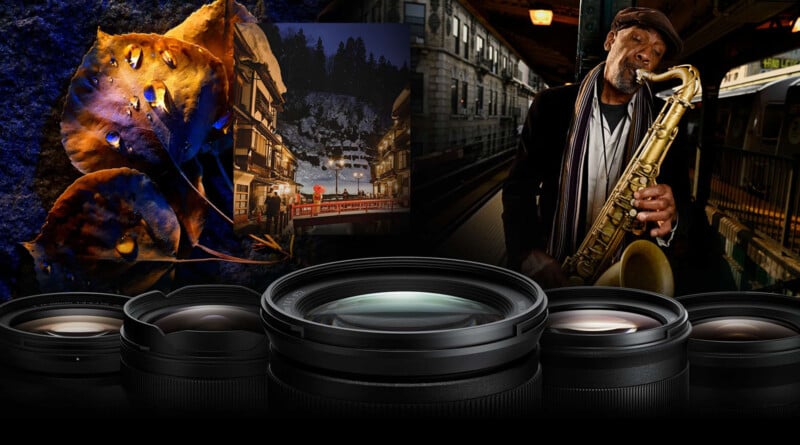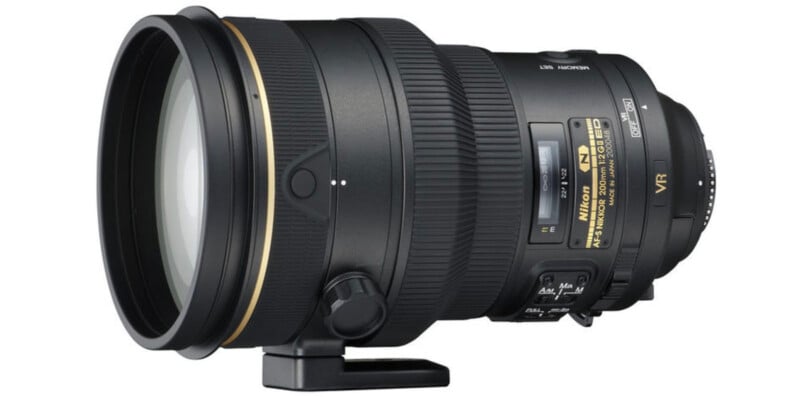Nikon Wants 50 Nikkor Z Lenses By Next Spring, So What’s Missing?
![]()
Speaking to PetaPixel at the NAB Show in Las Vegas earlier this month, Nikon said it aims to have 50 Nikkor Z lenses on the market by next spring. This hope begs the question, what is Nikon’s Z system missing now? What do photographers (and videographers) need and want next?
“The major turning point of our mirrorless camera system can be narrowed to three items: one, the Z9 release on December, 2021, two the Zfc and Zf, those unique product launches, and third is lens variety, Ikegami, Senior Executive Vice President and General Manager of the Imaging Business Unit at Nikon, told PetaPixel.
Ikegami continued, noting that Nikon now has 46 lenses in its lineup, an extremely impressive accomplishment given that the original Nikon Z6 and Z7 cameras launched in 2018 alongside just three lenses. Nikon has averaged nearly seven new lenses yearly since then, which Ikegami describes as “remarkable.”
“We aim to expand our lens lineup that makes the most use of the mount advantages that fulfill diverse needs and the shooting purposes of a wide range of customers. And in terms of future expansion, our goal is to expand the number of lenses to more than 50 by the end of this fiscal year. That’s the target,” adds Takashi Aihara, Department Manager, UX Planning, Marketing Sector, Imaging Business Unit at Nikon. For reference, the 2025 Japanese fiscal year ends on March 31, 2026. Nikon has some work to do to hit its target, but it’s entirely achievable at the company’s current pace.

Looking at Nikon’s Nikkor Z lens catalog, there are not many gaps — but there are a few that Nikon should (and might already be) working to address.
Faster, Wider Primes
Nikon’s widest Nikkor Z prime lens is the not-actually-that-wide Nikkor Z 20mm f/1.8 S. While a very good lens, many photographers, especially those interested in astrophotography, are keen to see Nikon release something wider.
There is also a reasonable desire for faster wide-angle prime lenses in Nikon’s lineup. The company recently released the Nikkor Z 35mm f/1.2 S and Nikkor Z 35mm f/1.4 prime lenses, which offer incredible performance and strong value, respectively. However, Nikon does not have any wider lenses with f/1.4 or faster apertures in the current Nikon Z system.

The company’s illustrious F mount lenses offer inspiration Nikon’s engineers could draw from, including the popular AF-S Nikkor 24mm f/1.4G ED and AF-S Nikkor 28mm f/1.4E ED primes. Nikon could do one better and go for a 20mm f/1.4 or even a 16mm f/1.8 for Nikon Z cameras. Both are realistic, achievable targets. Heck, Sigma has the excellent Art 14mm f/1.4 DG DN lens, which is frustratingly not available for Z mount.
Specialty Lenses: Fisheye and Tilt-Shift (Perspective Control)
Nikon’s legendary F mount system, which the company used in various iterations starting in 1959, had plenty of time to grow and expand. It is little surprise then that many specialty lenses were released for F mount SLR and DSLR cameras, including various fisheye and tilt-shift — or “Perspective Control,” in Nikon’s parlance — lenses.

The Nikkor Z family has some fascinating members, including super-fast primes like the Nikkor Z 58mm f/0.95 S Not and numerous unusual telephoto lenses such as the Nikkor Z 400mm f/4.5 VR S, Nikkor Z 600mm f/6.3 VR S, Nikkor Z 800mm f/6.3 VR S, and the Nikkor Z 180-600mm f/5.6-6.3 VR, but it has no distinctly “specialty” lenses.
This is not a uniquely Nikon shortcoming in the mirrorless age. Competitors aren’t getting into fisheye or tilt-shift lenses, either, with few exceptions. This is an area where Nikon excelled in the DSLR age, and could dominate in the mirrorless one, too. The company’s AF-S Fisheye Nikkor 8-15mm f/3.5-4.5E ED is a wild lens that could be recreated for a modern hybrid creator today. Nikon’s PC lenses, including 19mm and 45mm primes, delivered a lot of excitement to macro and architectural photographers. While the FTZ adapter exists, there is no substitute for new native lenses rebuilt from the ground up to take advantage of the wide-diameter, short-flange Nikkor Z mount.

DX, Where Are You?
While the first two sections focus on lenses catering to a high-end, professional audience, what about beginners and entry-level shooters using Nikon’s APS-C Z cameras? The Nikkor Z system has only a few APS-C lenses, all “kit” lenses and all-in-one zooms except for the Nikkor Z DX 24mm f/1.7.
There’s nothing wrong with Nikon’s current DX Nikkor Z lenses, and there’s no question that the overall photography market has shifted, reducing the relative popularity of APS-C cameras within the primarily full-frame Nikon Z system. That said, it is hard not to miss the days of high-end APS-C Nikon DSLRs like the Nikon D300 and D500 and associated high-end DX lenses like the Nikon AF-S DX 17-55mm f/2.8G ED-IF and AF-S DX Nikkor 35mm f/1.8G.

For Nikon mirrorless DX shooters, to get high-quality optics, they need to use full-frame lenses, which undercut the relative size advantage of smaller, lightweight APS-C cameras. Basically, the situation now is that APS-C photographers either need to compromise in terms of image quality, or sacrifice concerning the size of their kit. It’d be optimal to get the best of both worlds.
Something Altogether New
So far, the possibilities are mostly inspired by existing F mount lenses that have not yet made the leap to Nikkor Z, whether in a one-to-one upgrade or just a lens that provides similar functionality. Plenty of other F-mount lenses have not yet made the leap — but could — like the exceptional Nikon 105mm f/1.4E ED or long-discontinued AF-S Nikkor 200mm f/2G II ED, a legendary lens that remains beloved today.

However, as Nikon has already demonstrated with its Z lenses, the Nikkor Z mount enables all-new optical designs and lenses that have no F mount analog. It would be a shame to put Nikon’s optical engineers in a box, so it is entirely possible the company hits its 50-lens target with totally unique lenses that are nearly impossible to imagine — until they aren’t. Lens technology has advanced considerably in recent years, with companies creating optics that were inconceivable not long ago.
Given Nikon’s shock acquisition of RED last year and the new Nikkor Z 28-135mm f/4 PZ lens released earlier this year, it is also possible Nikon’s focus will be on hybrid or even video-first lenses to help flesh out the Nikkor Z system. A wide-angle PZ lens could make a lot of sense, as could video-optimized versions of some existing Nikkor Z lenses, similar to what Sigma occasionally does with its zoom lenses.
While it’s uncertain precisely what Nikon will release to hit its target of 50 lenses by next March, it is undoubtedly true that whatever lenses are released between now and then, Nikon Z owners have plenty to be excited about now and even more to look forward to.
Image credits: Header photo by Nikon